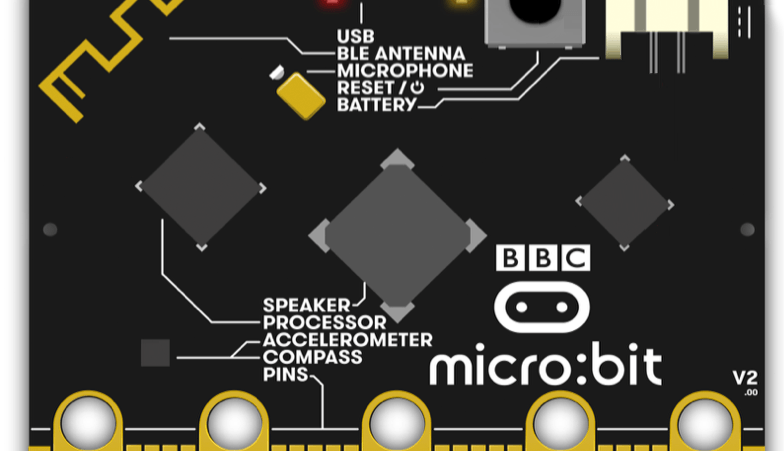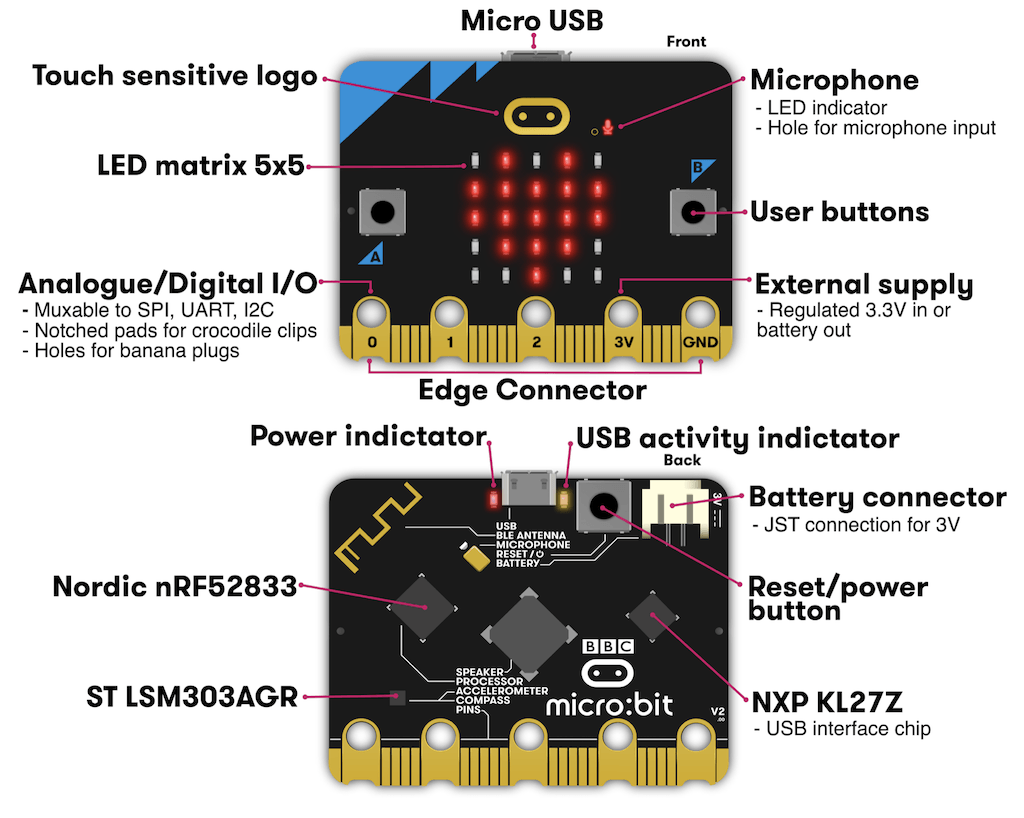New BBC Micro:bit V2 with Built-In Speaker, Microphone and Touch Sensor
October 13, 2020
on
on

With five million BBC Micro:bits in use for learning digital skills and computer thinking, the revamped micro:bit — the Micro:bit V2 will be available at the same price point in November 2020 — will provide even more opportunities for young engineers in the making to learn, explore and creatively inspire.
The first micro:bit was created by the BBC in cooperation with world-class co-creators in the field of technology and product design. In 2016, the British government gave away 1 million micro:bits for free to students in the UK with the accompanying BBC "Make it Digital" campaign, officially adding computing to the school curriculum en masse.

When it was launched in 2015, one of the main objectives of the original micro:bit was to create something that was capable, but with an accessible interactive approach to be accessible to a new and young audience. It had to be super easy to get started, but also not to create barriers as the projects became more complex.
Part of all this was to put the same hardware that real developers were using at that time into the hands of students. This is what made some of the more incredible applications of the micro:bit possible: handwriting recognition using an optical mouse sensor, use in a BLE mesh, or a presentation remote control.
The original micro:bit elegantly demonstrated the technology in a phone (the screen, the buttons, the wireless communication, the motion sensors, all controlled by a processor) and helped young people feel that they could understand and control these devices. The new Micro:bit V2 expands the hardware's capabilities to create and respond to sound, making it easy to understand the latest wave of consumer technologies, including AI smart speakers and digital assistants.
The first micro:bit was created by the BBC in cooperation with world-class co-creators in the field of technology and product design. In 2016, the British government gave away 1 million micro:bits for free to students in the UK with the accompanying BBC "Make it Digital" campaign, officially adding computing to the school curriculum en masse.
Micro:bit V2 with audio and touch capabilities
We are now five (well, four then) million copies sold and a new version will be on the market from November 2020. The new BBC micro:bit is a more powerful device that combines the same features of the original with the built-in microphone, speaker, capacitive touch sensor and a button that initiates the energy saving mode. The latest developments also provide an updated online platform designed and updated to provide opportunities for the introduction of future AI and ML education projects.
When it was launched in 2015, one of the main objectives of the original micro:bit was to create something that was capable, but with an accessible interactive approach to be accessible to a new and young audience. It had to be super easy to get started, but also not to create barriers as the projects became more complex.
Part of all this was to put the same hardware that real developers were using at that time into the hands of students. This is what made some of the more incredible applications of the micro:bit possible: handwriting recognition using an optical mouse sensor, use in a BLE mesh, or a presentation remote control.
New RF52833 from Nordic
With the Micro:bit V2, the team does it again: the nRF52833 is a modern, exciting component recently released by Nordic and used throughout the industry for new designs. It is capable of machine learning (ML) work, opening up a new world of possibilities, both for applications of the device, but above all to help clarify and demonstrate what ML really is — not magic, but an advanced application of technology.The original micro:bit elegantly demonstrated the technology in a phone (the screen, the buttons, the wireless communication, the motion sensors, all controlled by a processor) and helped young people feel that they could understand and control these devices. The new Micro:bit V2 expands the hardware's capabilities to create and respond to sound, making it easy to understand the latest wave of consumer technologies, including AI smart speakers and digital assistants.
Read full article
Hide full article


Discussion (0 comments)